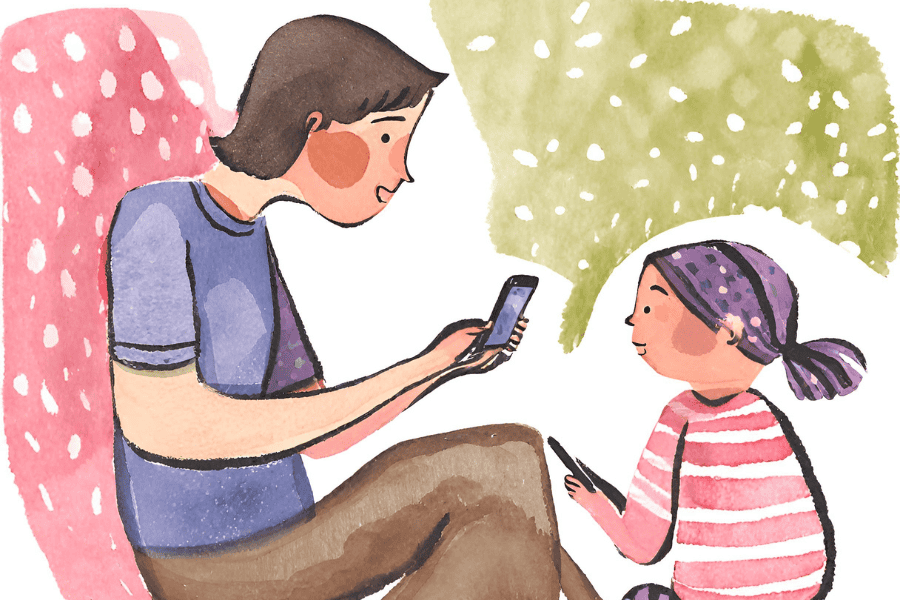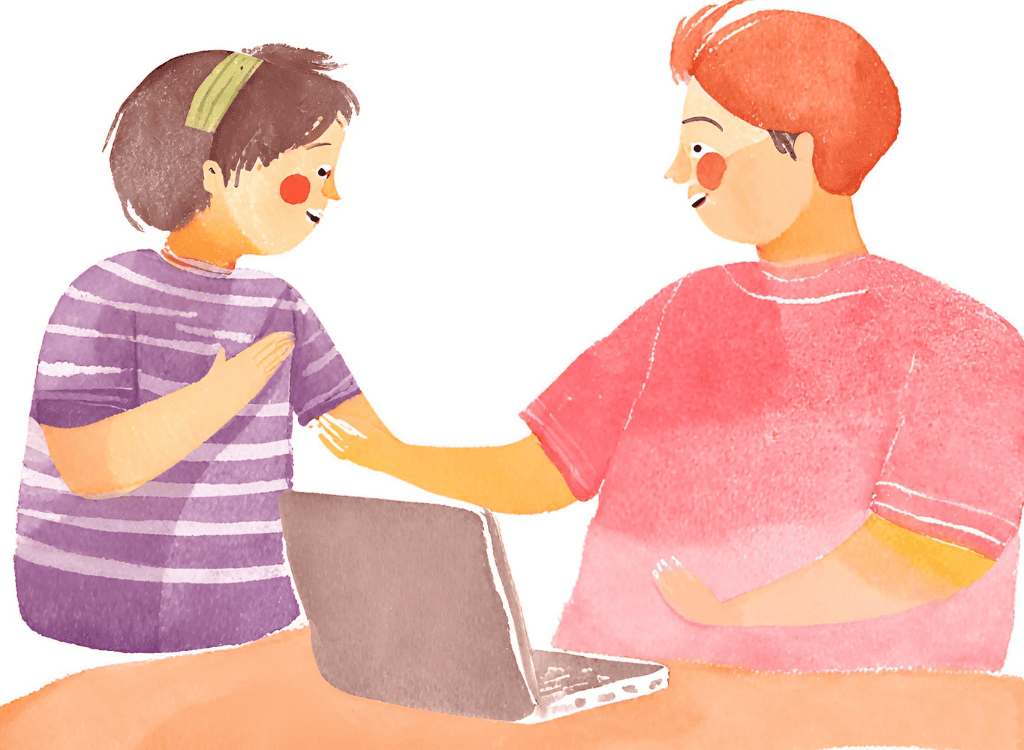How to Discuss Online Dangers with Your Kids

Quick Summary
- In today’s world, digital safety has become a topic that needs to be discussed with children from an early age. However, what parents must always keep in mind when discussing this is that every child is unique.
- Some children may feel restricted when talking about safety precautions. While some may be very open to discussing the matter, others might react negatively.
- At this point, the nature of the communication you have with your child is crucial. Additionally, if you are using parental control systems, it’s vital to consider how you will integrate these systems into your digital habits and how you will convey this information
What is Digital Safety? And what does Digital Parenting mean?
In our articles, we had discussed what online safety is for children and how parents should approach this issue. One of the most challenging steps in this awareness is perhaps talking to your child. It’s about selecting the right words, informing them about the dangers in the online environment without scaring them.
Therefore, in this article, we’ve gathered approaches to guide parents who are concerned about discussing online safety with their children. Initiating this conversation is just one step in ensuring safety. Especially younger children, while they may grasp the essence of the conversation, could struggle to discern the content. At this juncture, it’s crucial not to place the entire responsibility on your child’s shoulders but to support them. With Nutcracker, we’re by your side, offering safety features not just on websites but also on social media and console games. Through our services, you can monitor how often your child encounters online dangers and block inappropriate content before it reaches them.

How Might Children Feel When Talking About Online Safety?
Every child is different. Therefore, their reactions can vary when you talk to them about online safety. To maintain a healthy conversation, it’s best to understand and recognise their feelings and provide the appropriate responses.
- Anxious and Scared: Children might feel frightened when hearing about online threats due to a lack of sufficient knowledge on the subject. Explaining that the purpose of the discussion isn’t to alarm them, but rather to take precautions, can help put them at ease. As your child becomes more comfortable, you can take care to share the information gradually.
- Restrained: Children who frequently play online games or enjoy using social media may fear that their freedom to use the internet will be restricted. At this point, you can mention that the aim of the conversation is not to limit them but to keep them safe.
- Curious: Some children might want to learn more about what they hear during the discussion, asking deeper questions about the topic. Therefore, before the talk, you can anticipate potential questions they might have, encouraging them to ask anything they’re curious about.
- Defensive: Teenagers in particular might misunderstand the content of the conversation and want to defend their internet use. For kids in this mood, you can focus on building trust by reminding them that your intention is to protect them.
- Moderate: Children with strong communication ties with their family may correctly interpret their parents’ intentions and lean towards finding mutual solutions. At this point, actively listening and creating joint rules with them will be much more straightforward.
What’s the Right Age to Discuss Online Safety with Children?
- At First Access: Nowadays, children start familiarising themselves with devices like tablets and phones at a very young age. At these ages, when they’re not yet deeply engaged with mobile apps, social media, and online games, explaining all the online risks might overwhelm and worry them. The information shared should be basic, using simple explanations like “don’t share information with strangers” or “show me if you see something strange.
- When Starting School and Pre-adolescence: Children might become more detached from technology during their school years due to both social influences and their developmental phase. At this stage, you can provide safety tips on potential risks they face on social media, information sharing, and cyberbullying.
- Adolescence: Adolescence is a period when children become more independent and spend more time online. It’s also a phase of identity search, so it would be good to have a detailed discussion about privacy settings, inappropriate content, strangers online, and the risks of social media.

Explaining Online Safety to Children
Starting the Conversation
Many parents find starting a conversation about online safety with their children to be one of the most challenging steps. If your child is using the internet for the first time, you can introduce the topic by mentioning some points they need to be cautious about. If your child is older and you want to discuss internet risks, you can clarify what you’d like to talk about, openly expressing your concerns without hiding them.
Providing Information About Personal Data and Risks
Children might not always evaluate the surrounding risks correctly, or due to their age, they might be more impulsive towards risk-taking. Therefore, during the conversation, you can inform them about potential risks and express your concerns with rational justifications. You can find detailed information about online risks in our article titled “The Top 5 Online Safety Risks and How Parents Can Mitigate Them“. You can explain the importance of personal information like their name, address, phone number, and school name and provide them with examples.
Managing Difficult Reactions
Your child might get scared, anxious, or not want to talk about this information once they hear it. Be prepared for such reactions. Try to explain the importance of these topics and why they need this information without invalidating their feelings.
Listening to Their Opinions
Naturally, your child will want to express their thoughts about what they’ve heard. Silencing them or preventing them from speaking will appear oppressive. Listen to them carefully, taking their feelings and concerns seriously.
Setting Your Family’s Tech Usage Rules
One of the best ways to communicate effectively with your children is to lead by example. Therefore, making them feel that these rules and risks apply to everyone in the family is essential. Based on common usage habits, you can establish rules to maintain optimal internet use and discuss areas of potential risk, explaining how you keep yourself safe.
Nutcracker, with its screen-time limiting feature, will be your biggest ally in monitoring everyone’s internet use at home! It can identify and inform you about risky content and promotes useful content on gaming platforms, youtube, and the online environment. Even if you’re not around, make sure your child remains safe by clicking here and getting one step closer to online safety!
